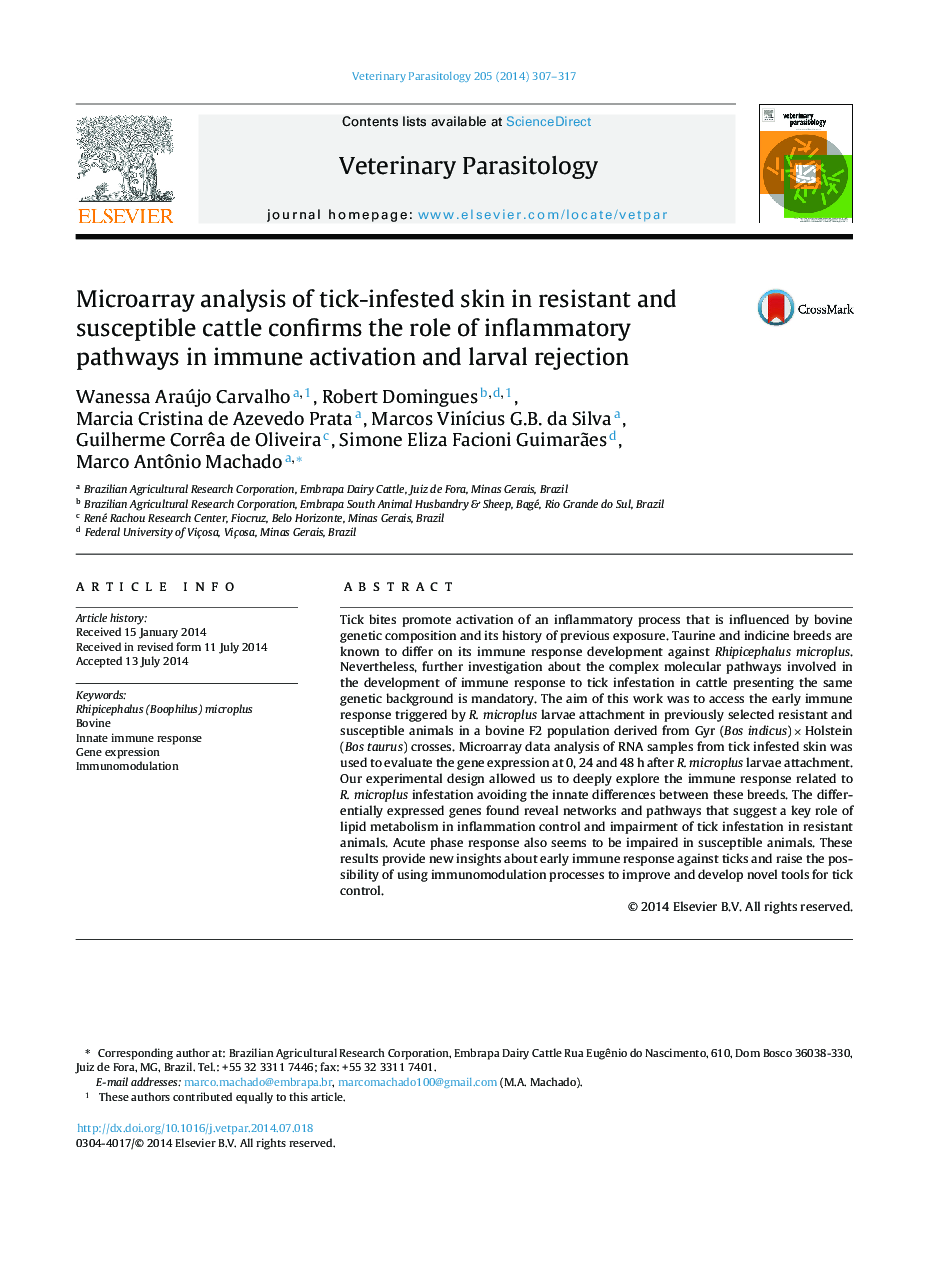| کد مقاله | کد نشریه | سال انتشار | مقاله انگلیسی | نسخه تمام متن |
|---|---|---|---|---|
| 5803244 | 1555681 | 2014 | 11 صفحه PDF | دانلود رایگان |
Tick bites promote activation of an inflammatory process that is influenced by bovine genetic composition and its history of previous exposure. Taurine and indicine breeds are known to differ on its immune response development against Rhipicephalus microplus. Nevertheless, further investigation about the complex molecular pathways involved in the development of immune response to tick infestation in cattle presenting the same genetic background is mandatory. The aim of this work was to access the early immune response triggered by R. microplus larvae attachment in previously selected resistant and susceptible animals in a bovine F2 population derived from Gyr (Bos indicus)Â ÃÂ Holstein (Bos taurus) crosses. Microarray data analysis of RNA samples from tick infested skin was used to evaluate the gene expression at 0, 24 and 48Â h after R. microplus larvae attachment. Our experimental design allowed us to deeply explore the immune response related to R. microplus infestation avoiding the innate differences between these breeds. The differentially expressed genes found reveal networks and pathways that suggest a key role of lipid metabolism in inflammation control and impairment of tick infestation in resistant animals. Acute phase response also seems to be impaired in susceptible animals. These results provide new insights about early immune response against ticks and raise the possibility of using immunomodulation processes to improve and develop novel tools for tick control.
Journal: Veterinary Parasitology - Volume 205, Issues 1â2, 15 September 2014, Pages 307-317
